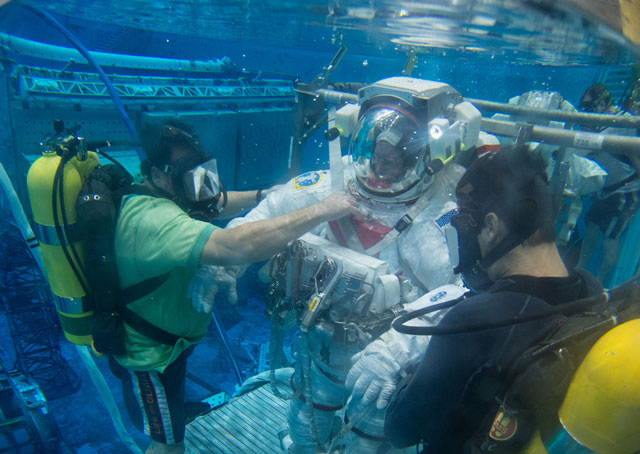
The NASA astronaut class of 2017 will be the most competitive in the agency’s history, with more than 18,300 applications submitted for the newest astronaut class.
NASA issued a call for applications in December, and the aeronautics and space agency will ultimately select a tiny fraction of the resulting applicant pool, eight to 14 individuals, for a years-long training process that could culminate in flight assignments including a possible trip to the red planet, or, at least, missions on a vehicle being designed to make that grueling journey far beyond Earth’s orbit.
“It’s not at all surprising to me that so many Americans from diverse backgrounds want to personally contribute to blazing the trail on our journey to Mars,” said NASA Administrator Charlie Bolden, a former astronaut, in a news release. “A few exceptionally talented men and women will become the astronauts chosen in this group who will once again launch to space from U.S. soil on American-made spacecraft.”
The selection process will be challenging for both the applicants and the agency, since the applicant pool is more than three times the size of the previous astronaut class (2012), and twice the size of the previous record of 8,000 who applied to be astronauts in 1978, when the space shuttle was still in development. Those who are chosen, and succeed in their training, could be assigned to the International Space Station, new commercial space vehicles developed by private companies, or NASA’s Orion deep space explorer. Being able to speak Russian is among the job requirements, though NASA did not mention the Russian Soyuz among the possible assignments for this class: SpaceX and Boeing are both building craft that are designed to transport crews to and from the orbiting station.
“We have our work cut out for us with this many applications,” said Brian Kelly, director of Flight Operations at Johnson Space Center in Houston, where astronauts are selected and trained. “But it’s heartening to know so many people recognize what a great opportunity this is to be part of NASA’s exciting mission. I look forward to meeting the men and women talented enough to rise to the top of what is always a pool of incredible applicants.”
Successful candidates will train for two years in Houston, mastering vehicle systems, space walking skills, and other skills required of the new class of pioneers. It remains unclear if they will get as far as Mars, though that is certainly among the destinations NASA has in mind in the long term. After completing the rigorous training program, astronauts are assigned to technical duties at Johnson while they await flight assignment.



